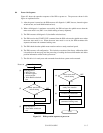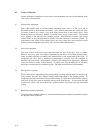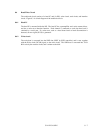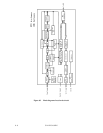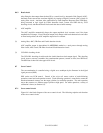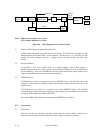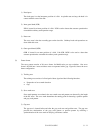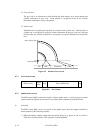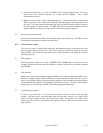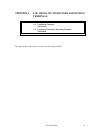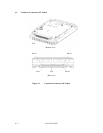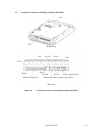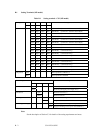C141-E134-01EN 8 - 13
2) In the next timing phase of 1) above, the DSP creates a rotating magnetic field. The motor
rotates from a low rotational frequency up to about 100 min
-1
(100rpm). This is called
synchronization control.
3) When the motor reaches a high rotational frequency, a counter-electromotive voltage (back
EMF) is generated. This voltage tells the DSP the rotational frequency and angular position of
the motor. Using the rotation position detection data, the spindle controller supplies current to
the correct phase to rotate the motor. The MPU then detects the rotational frequency, and the
spindle controller accelerates the motor up to the steady-state angular frequency.
(2) Rotational speed control mode
When the activation mode terminates, the rotational speed control mode starts. The MPU controls
the controller to maintain the detected rotational speed.
8.7.5 Voice coil motor control
The voice coil motor is controlled by moving the head-mounted carriage according to the servo
data recorded on the specific data side. This control is done by firmware by digital servo control
using the DSP. This control provides return-to-zero (RTZ) operation, seek operation, and track
following operation.
(1) RTZ operation
When the power is turned on, or when a REZERO UNIT COMMAND is issued from the host
computer, the DSP moves the head to the reference cylinder (cylinder 0) by an internal command
from the MPU.
(2) Seek operation
When the host issues a data read/write request, the MPU issues a seek command to the DSP to move
the head to a target cylinder. When the DSP receives this command, the DSP drives the voice coil
motor, via the digital-to-analog converter and power amplifier, to move the head to the target cylinder.
A predetermined target speed is used depending on the distance to move. The head is accelerated or
decelerated to move to the target cylinder. Track following operation then begins.
(3) Track following operation
To read or write data from or to a disk, the head must be correctly centered over the target
cylinder. The DSP receives a position signal from the servo head, converts it to a digital signal
using an analog-to-digital converter, then decodes the signal. The digital servo control circuit
controls the voice coil motor so that the position signal is constant. This centers the head over the
target cylinder.



